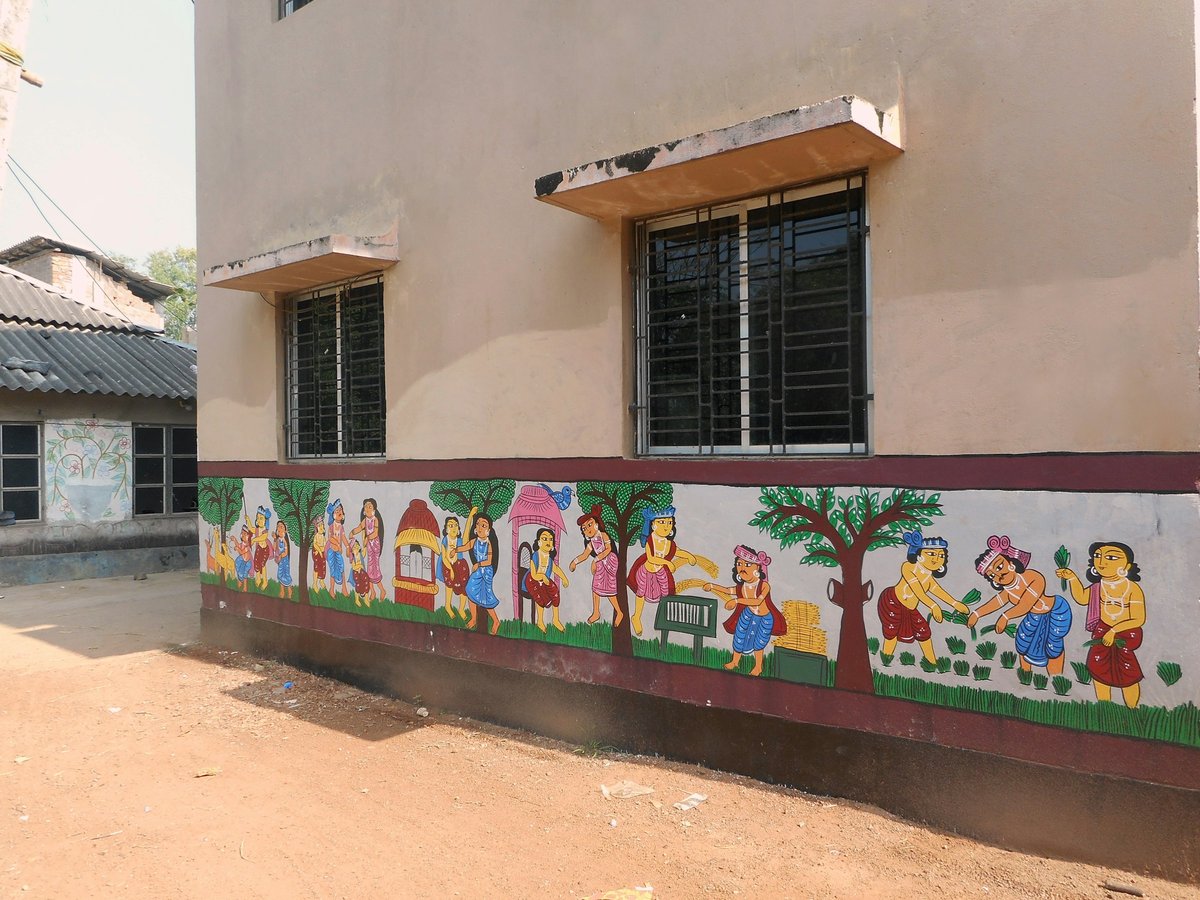In 1975, India launched an ambitious welfare scheme for young children: the Integrated Child Development Services (ICDS) scheme, known best for its mission to tackle malnutrition through ‘anganwadis’, or village-level care centres.
In 2025, as the scheme marks its golden jubilee, anganwadis have become a crucial presence in nearly every village and urban slum – nearly 14 lakh centres across India where children below the age of six receive hot cooked meals and dry rations, where frontline workers monitor their health and vaccinations and, when needed, refer malnourished children for treatment. Pregnant and lactating women also receive care and supplementary nutrition at anganwadis.
Despite consistent problems of poor infrastructure, inadequate budgets and controversies over the quality of food provided, anganwadis have played an important role in addressing malnutrition and children’s health in the past 50 years. In 1975, for instance, 16-30% of Indian children showed varying degrees of severe undernutrition. By 2019-21, this figure was down to 7.7%, according to the National Family Health Survey-5. The vaccine coverage rate for children under two has also significantly increased over the years, from 27.5% in 1993 to 77% in 2021, as per NFHS data.
But there’s another major role that anganwadis play under the ICDS: providing early childhood education to millions of children before they enter formal schooling in Class 1. This confluence of health and education makes sense – the early years of a child’s life are crucial not just for physical development but also cognitive and emotional growth, and the ICDS attempts to provide children with both under the same roof. How well has it fared on this front in 50 years?
According to the Annual Status of Education (ASER) report 2024, anganwadis are the biggest provider of pre-primary school services in India, with more than half of all children aged 3 and 4 enrolled in them. In some states, like Karnataka, Gujarat, Odisha and West Bengal, more than 75% of 3-4 year olds study at anganwadis.
The quality of education at anganwadi centres, however, is far from optimal. I have had the opportunity to visit dozens of anganwadis across India in the past decade, and witnessed them struggling against the odds to fulfil their educational function. In many villages, for instance, anganwadis have crumbling walls, poor ventilation and little money to buy instructional material like charts, toys or flashcards. Anganwadi workers, who have protested poor pay for decades, have told me how they often pay from their own pockets to print teaching material for the children in their care. In Mumbai, I have seen anganwadis being forced to operate from 100-sq-ft homes of slum residents, with up to 25 children jostling for space while the anganwadi worker tries to show them illustrated flashcards.
Most anganwadi workers have studied up to Class 10 or 12, with no formal training in early childhood education. Because of the disproportionate burden of their healthcare responsibilities – including making home visits around the village and maintaining detailed records of each child’s health – they have limited time to devote towards teaching.
Researchers from OPJS University in Rajasthan studied 30 anganwadis in Punjab and found that 60% of workers devoted 1-2 hours of time for educational activities, and 36% devoted less than an hour. Another study in Tamil Nadu found that anganwadi workers spent an average of just 38 minutes per day on pre-school instruction. The National Education Policy 2020 prescribes at least 3-4 hours of play-based learning for pre-school children, which anganwadis are often in no position to provide.
As a result of this, foundational learning outcomes of anganwadi-educated pre-schoolers has been dismal: a study found that only 15% were able to match basic objects, and only 30% could identify larger and smaller numbers – skills essential for letter recognition and arithmetics in Class 1. One way to improve these outcomes, according to the study in Tamil Nadu, is to hire additional instructors at anganwadis specifically for early childhood education. When the researchers added an extra educator at each centre, it doubled the instructional time and led to increased language and math test scores after 18 months of intervention.
Fortunately, the NEP 2020 has taken note of these problems and made a range of recommendations to improve early childhood education in India. This includes providing anganwadis with high-quality, child-friendly infrastructure, play equipment, and a six-month training programme for anganwadi workers. The policy aims to eventually integrate anganwadis into primary school complexes, and has tasked NCERT (National Council of Educational Research and Training) with developing a curriculum for early childhood education.
Several states have already begun implementing a number of these recommendations. Uttar Pradesh, for instance, is hiring 11,000 trained early childhood educators for their Bal Vatikas, or government-run pre-schools, many of which are part of anganwadis. This year, Maharashtra is rolling out Aadharshila, a new curriculum designed for pre-primary education, in over one lakh anganwadis in the state, along with a training programme for anganwadi workers.
